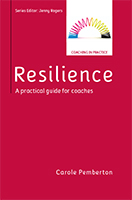
My current favourite podcast is author Elizabeth Day’s How to Fail. Each week she interviews visibly successful people about their failures. Not their humblebrag failures of ‘my greatest failure was to give too give too much of myself to my work on the way to becoming famous’ variety. Rather the failures that were tough, but from which important learning came. The basic premise is that it is in our failures that our successes are born. A recent interviewee psychotherapist Philippa Perry expressed it beautifully when she said, “life is about rupture and repair”. In all of our lives there are moments of rupture, when what we have come to expect is torn away from us, whether that is a rupture of relationships, of health, of finances or of career. The challenge then is how we repair, and what we learn in the process.
It is in the repair that we are asked to bring our resilience resources into play: to access the qualities that will allow us to find a new perspective and to integrate the failure into our narrative about ourselves. I like the image of repair, because it allows for a mark being left. Rather than resilience being bounce back, with the aim of making the knock down invisible: like springing up quickly after a trip on the pavement, to protect our embarrassment, repair acknowledges that we are left with marks. There is no invisible repair, no matter how skilled the sewer. Those marks are a reminder to us of both the rupture and how we have dealt with it.
For each of us there are different approaches to repair dependent on our own resilience template. For some it will be through optimism, for others through finding a new purpose, taking care of our physical self or reaching out to others for support.
When I work with clients I am looking not just for what aspect of their resilience has been lost to them during the rupture, but also what they can call on to enable repair.
Both those approaches can be find in the questionnaire I have recently posted on my website.
www.coachingtosolutions.com. It is offered to help both acknowledge what needs attention, but also to enable the individual to recognise what is in their sewing box that will help them move forward.
If you are experiencing a rupture that needs repair take a look.

